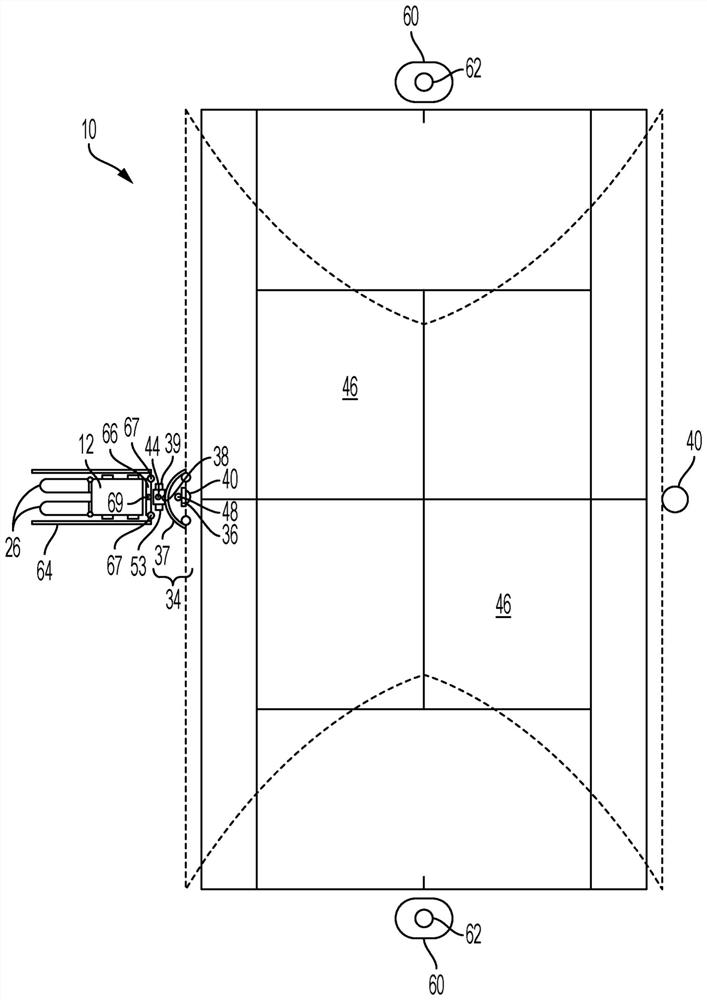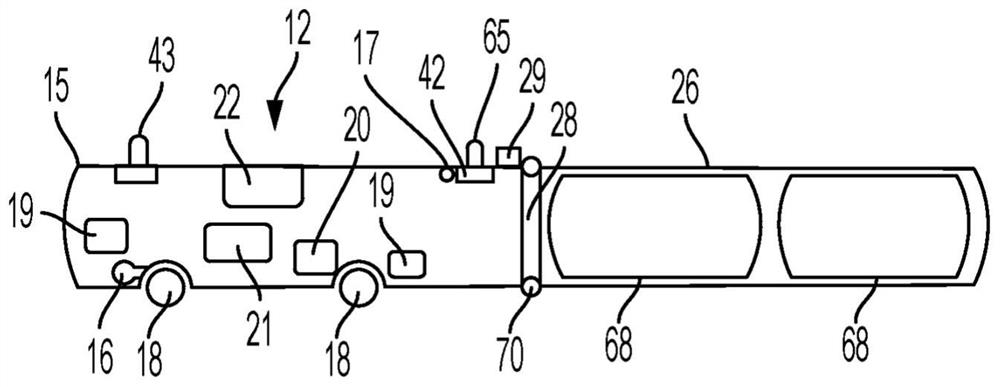Ball retrieval system and method
A drive system and return technology, applied in control/adjustment systems, rackets, balls, etc., can solve the problems of high processor overhead, high power demand, and heavy weight, so as to speed up the game speed, reduce the game time, and better cost value effect
- Summary
- Abstract
- Description
- Claims
- Application Information
AI Technical Summary
Problems solved by technology
Method used
Image
Examples
example 1
[0140] The retriever 12 is constructed by modifying an off-the-shelf Simrex A130 1 / 16 scale 2 wheel drive RC remote control off-road truck with a ball collector 24 containing opposing blades 26 mounted thereon. The retriever was tested on hard court surfaces, successfully collecting the ball at the net and in areas away from the net and releasing the ball towards the midpoint on the baseline. Therefore, a number of different blade configurations were tested in order to define and refine blade parameters such as length, profile, optimal sensor placement, and passive pawl configuration, etc., to finally determine the 3D printed prototype blade (“test blade”). Design Parameters.
[0141] The test vanes 26 were fabricated as mirror images of each other using a 3D printing process using the Autodesk Computer Aided Design (AutoCAD) program using acrylonitrile-butadiene-styrene copolymer of the following specifications ( ABS) polymer:
[0142]
[0143] For testing, blades 26 wer...
example 2
[0145] The operational properties of the test blade were first investigated by holding the blade in a) a stationary fixed position and b) a rotatable position, and guiding a tennis ball at the test blade at different angles and at different ball speeds and guiding the tennis ball into the In the test blade, the test is recorded with video at the same time and the performance of the test blade is studied frame by frame. The balls were fed through 3" Inner Diameter (ID) 10' long Poly Vinyl Chloride (PVC) tubing installed in 4" ID 10' long PVC tubing to Provides flexibility while changing ball speed and allows balls (≈2.7" diameter) to exit freely through the angled 4" duct opening. The pipes were set at different heights at the feed end to produce varying ball exit velocities from 3ft / s to 10ft / s.
[0146] (a) Static test: Higher velocity tennis balls were effectively caught despite some front spar bounce. Lower speed retrievals are routine.
[0147] (b) Rotation test: The re...
PUM
 Login to View More
Login to View More Abstract
Description
Claims
Application Information
 Login to View More
Login to View More - R&D
- Intellectual Property
- Life Sciences
- Materials
- Tech Scout
- Unparalleled Data Quality
- Higher Quality Content
- 60% Fewer Hallucinations
Browse by: Latest US Patents, China's latest patents, Technical Efficacy Thesaurus, Application Domain, Technology Topic, Popular Technical Reports.
© 2025 PatSnap. All rights reserved.Legal|Privacy policy|Modern Slavery Act Transparency Statement|Sitemap|About US| Contact US: help@patsnap.com



